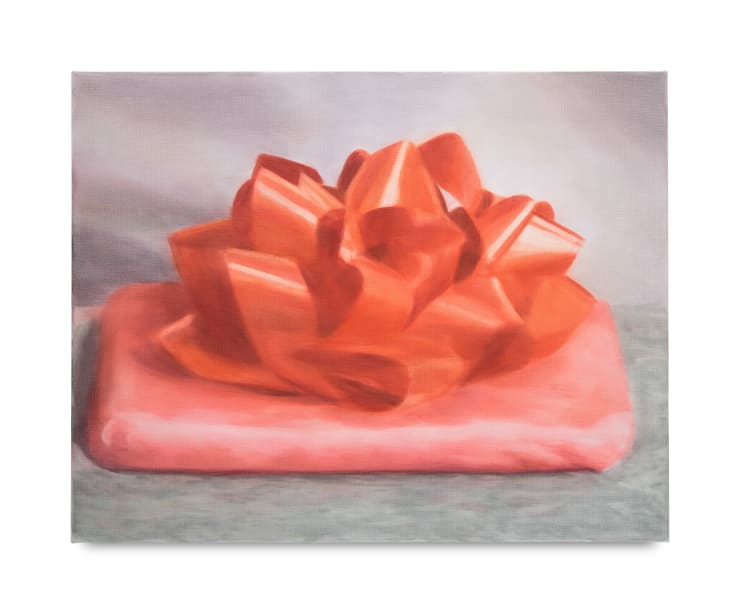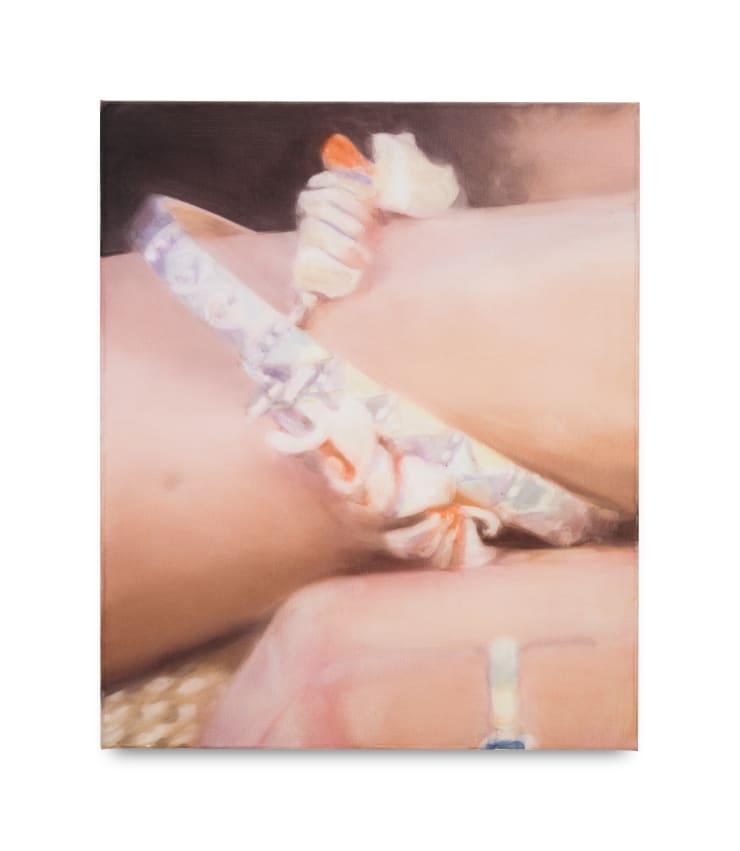For NADA Miami 2023, Workplace is delighted to present a group booth of three emerging women painters who each deal with the concept of the fragment to articulate complex relationships with different modes of narrative: of memory, the dramatic, and of global economic and political narratives.
Sooim Jeong relocates a combination of past memories into the quotidian places around her, for example: a small incidental weed growing on the top of a wall that she walks past on the way to her studio, or other such surroundings from her daily routine, are contrasted against significant events from her past, often of a brutal or traumatic nature. Using minimal brushstrokes and spare, sensitive colour palettes, she creates oil paintings that play with composition and metaphor - relocating human figures in remembered and imagined spaces, and often abstracting and de-identifying them through pattern and motif.
For Rachel Lancaster, painting slows down the act of looking; it invites the gaze to linger upon the otherwise overlooked. With a focus on the intersections of painting with cinema, photography and music, Lancaster edits and translates photographic ‘stills’ into oil paintings, drawing on found moving imagery. She draws upon film theory and depicts objects and characters divorced from greater narratives, rendering those fragments both descriptive and abstract, ambiguous and open-ended; figures and objects are rendered uncannily illuminated and enigmatic. Lancaster applies multiple thin layers of paint to the canvas, to produce varied optical effects – the immediacy of the paint’s surface playing off against the hazy, half-remembered qualities characteristic of her chosen images. She manipulates colour and utilises cropping and mark-making techniques, to play upon the latent, dreamlike sense of otherness found in cinema, reimagining this upon the canvas.
Meredith Sellers’ paintings utilize images from art history, stock photography, advertisements, and the media to examine systems of power and violence. Sellers considers the mediated image and its relationship to power, history, and cycles of consumerism, desire, and apathy, through the frame of the window as both an architectural and digital space. Sellers’ paintings depict isolated stock photos and borrowed images set amongst fields of vivid colour. Recently, she has employed symbols and tropes of memento mori in historical Dutch still life painting, reframing them next to contemporary images of consumption and violence to explore the seeds of globalized capitalism. Forced into conversation, these seemingly unrelated images form their own enigmatic languages that speak of macro-economics, the climate emergency and the tectonic tension between the quotidian and the grand-narratives of our time.





